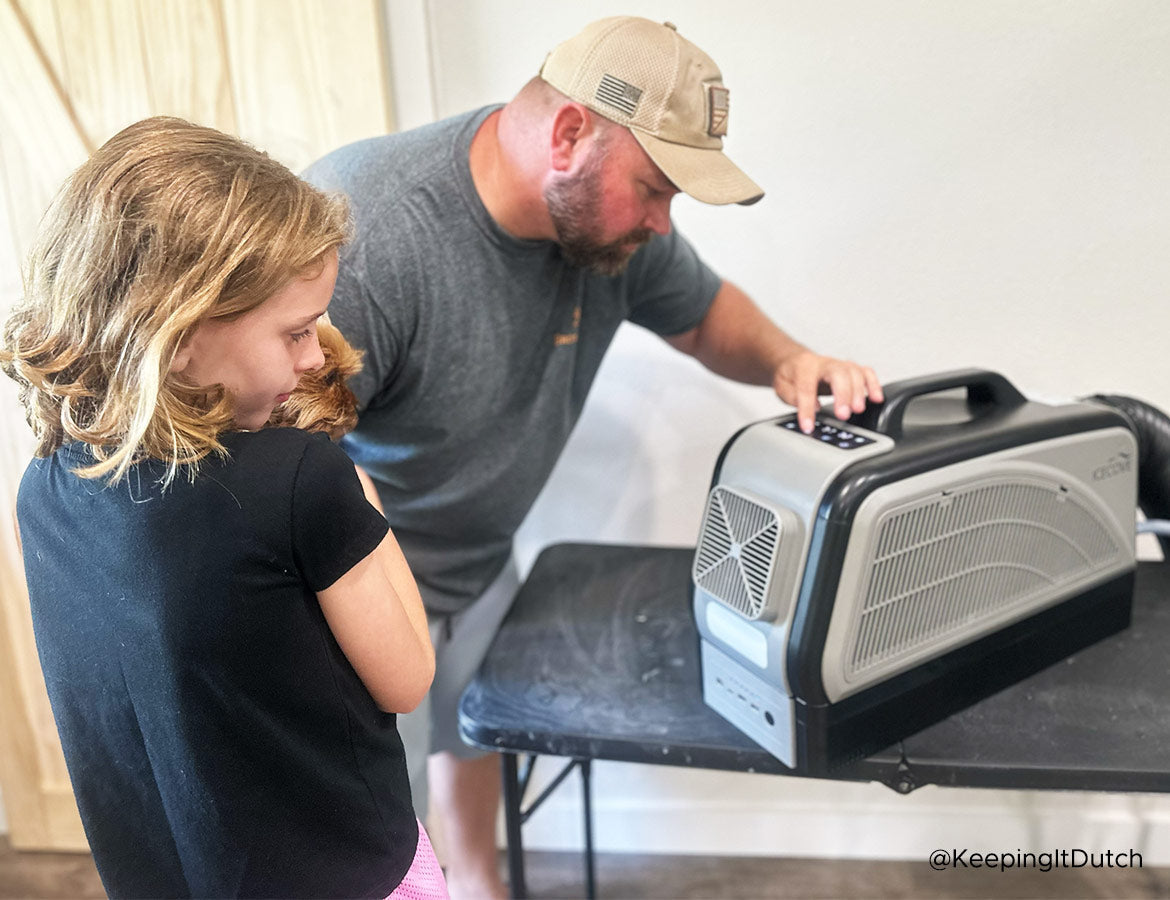Portable air conditioners offer quick, convenient cooling for spaces where traditional systems fall short. But one common question arises for almost every homeowner considering one: Do all portable air conditioners need to be vented out a window? The short answer: most do—but not all. And how they’re vented can significantly impact efficiency, comfort, and ease of use.
In this detailed guide, we’ll break down the mechanics behind portable AC units, clarify venting requirements, explore windowless alternatives, and spotlight the SUNJOY Portable Air Conditioner—a game-changer in flexible climate control.
Understanding How Portable Air Conditioners Work
To understand venting requirements, you need to know how a portable air conditioner operates. These units pull in warm air, cool it through a refrigeration cycle, and then expel hot air through an exhaust system. That hot air needs to go somewhere—typically out a window—so the cooled air can stay indoors.
There are three types of portable air conditioners
1. Single-Hose Portable AC
Pulls air from the room, cools it, and expels hot air outside through one hose.
Most efficient when properly vented.
2. Dual-Hose Portable AC
One hose pulls in air from outside, another expels warm air.
More balanced air pressure and better for larger rooms.
3. Evaporative Coolers (Swamp Coolers)
Use water to cool and humidify the air.
Do not require venting but are only effective in hot, dry climates.
Why Most Portable ACs Require Venting
Without venting, the heat extracted from the air has nowhere to go. If you don't vent it, the unit will push warm air back into the room, negating the cooling effect.
Problems caused by poor venting:
Increased room temperature
Condensation buildup
Poor air quality
Reduced efficiency
This is why manufacturers—like SUNJOY—always recommend proper venting for optimal cooling.
Are There Windowless Portable Air Conditioner Options?
If you don’t want to (or can’t) vent through a window, here are some viable alternatives:
1. Vent Through a Wall or Drop Ceiling
Some units can be vented through a sliding door, wall, or suspended ceiling.
2. Use a Venting Kit with Extensions
SUNJOY’s portable AC comes with a flexible exhaust hose and universal adapter, ideal for creative setups.
3. Use Battery-Powered or Evaporative Units
These units (like the SUNJOY Portable Air Conditioner) are ideal for tents, vehicles, and small enclosed spaces where traditional venting isn’t possible.
Spotlight: SUNJOY Portable Air Conditioner
SUNJOY’s innovative 2500 BTU battery-powered portable air conditioner redefines what’s possible in small-space cooling:
Key Features:
No window venting required: Ideal for tents, cars, beach tents, and campers
Dual charging options: Runs on both AC power and portable battery
LED flashlight & controls: For camping and emergency use
R290 refrigerant system: Eco-friendly and efficient
Unlike standard portable AC units, this model prioritizes flexibility and is designed for use in environments without window access.
Pros and Cons of Non-Vented vs. Vented ACs
|
Feature |
Vented AC |
Non-Vented Portable AC (Battery or Evaporative) |
|
Cooling Power |
High |
Moderate |
|
Requires Exhaust Hose |
Yes |
No |
|
Ideal Use |
Bedrooms, offices, garages |
Tents, RVs, outdoor use |
|
Energy Efficiency |
High (if vented properly) |
Varies |
|
Portability |
Medium |
High |
SUNJOY’s portable air conditioner fits perfectly into the non-vented category for mobile and temporary applications.
Choosing the Right Portable AC for Your Space
To decide whether you need a vented model or not, ask yourself:
Do I have access to a window, sliding door, or wall opening?
Am I cooling a permanent room or temporary space?
How important is portability and off-grid operation?
Recommended usage for ventless ACs:
Summer camping trips
Tailgate parties
Small RVs and vans
Beach tents or backyard gazebos
Maintenance Tips for Optimal Performance
Whether vented or not, regular maintenance improves performance:
Clean the air filters every 1–2 weeks
Keep the exhaust hose (if used) free from kinks
Charge the unit’s battery fully before trips
Store in a dry place during off-seasons
SUNJOY’s portable AC includes an easy-to-access side filter and recessed track for efficient upkeep.
FAQs: Portable AC Venting Questions Answered
Q: Can I run a vented portable AC without the hose?
A: Technically yes, but it will just blow hot air back into the room—defeating the purpose.
Q: Is a battery-powered portable AC effective?
A: Yes—for small spaces and short-term use. SUNJOY’s unit runs up to 30 hours depending on settings.
Q: Can I use a portable AC in a car?
A: Yes, especially the compact, battery-powered type like SUNJOY’s unit designed for vehicle cooling.
Final Thoughts: Do You Always Need a Window? Not Anymore.
While most traditional portable AC units do require window venting, newer models like the SUNJOY Portable Air Conditioner are designed for flexibility. If you need to cool a small, enclosed area where traditional venting isn’t practical, battery-powered and ventless models offer freedom and function.






Leave a comment
All comments are moderated before being published.
This site is protected by hCaptcha and the hCaptcha Privacy Policy and Terms of Service apply.